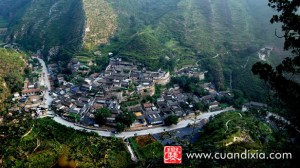 During the first week of June, the 9th International Carbon Dioxide Conference held in Beijing gathered together the carbon community from different parts of the world. Conference presentations ranged from climate policy to in-situ and remote observations of CO2 and modelling of CO2 emissions and sinks. As one might expect, many of the presentations considered anthropogenic CO2 emissions. Alarming news was that during recent years, global CO2 emissions have followed the worst scenarios predicted by different sources; the hope that the emissions would follow lower estimates is declining. Besides the growth in emissions, one of the biggest questions among the community seemed to be the strength of carbon sinks on land surface and in the ocean. Currently, oceans are considered to store about 1/3 of anthropogenic CO2 emissions but this number includes large uncertainties. Furthermore, several presentations referred to modelling studies suggesting that the carbon sink to oceans is actually smaller than previously expected, and that the sink may saturate more rapidly.
During the first week of June, the 9th International Carbon Dioxide Conference held in Beijing gathered together the carbon community from different parts of the world. Conference presentations ranged from climate policy to in-situ and remote observations of CO2 and modelling of CO2 emissions and sinks. As one might expect, many of the presentations considered anthropogenic CO2 emissions. Alarming news was that during recent years, global CO2 emissions have followed the worst scenarios predicted by different sources; the hope that the emissions would follow lower estimates is declining. Besides the growth in emissions, one of the biggest questions among the community seemed to be the strength of carbon sinks on land surface and in the ocean. Currently, oceans are considered to store about 1/3 of anthropogenic CO2 emissions but this number includes large uncertainties. Furthermore, several presentations referred to modelling studies suggesting that the carbon sink to oceans is actually smaller than previously expected, and that the sink may saturate more rapidly.
That China was the host of the conference seemed apt: between 1990 and 2011, the contribution of China’s CO2 emissions on a global level increased from below 10% to 26%. In 1978, less than 17% of the Chinese population lived in cities, whereas currently this fraction is already above 50%. Urbanization, industrialization, and globalization are considered to be the main CO2 emission growth drivers. Despite the enormous increase in emissions, some regions in China, such as Beijing, have been able to keep their emissions fairly steady for the last ten years. Moreover, looking at CO2 emissions per capita, USA and EU are still ahead of China.
The conference finished in the conclusion that clearly more work in understanding the sinks and emissions of CO2 is necessary, particularly regarding the role of soil and water. For more information, please see the special issue in Tellus B (Vol. 62, Issue 5).
Leena Järvi
Finnish participants
Leena Järvi and Timo Vesala, Division of Atmospheric Sciences, Department of Physics, UHEL
Anne Ojala and Pekka Kauppi, Department of Environmental Sciences, UHEL
